Google unveils Nexus Q, the 'Tiny Android computer'

If Boxee shook up the design world by turning the standard set-top box form factor into an odd geometric shape, Google has completely eliminated the "box" from the equation, and unveiled the Nexus Q, a streaming home entertainment hub for connecting your TV to your Android devices and to Google Play for content distribution.
It features:
Google's Nexus 7 tablet goes up for sale at $199, ships in July
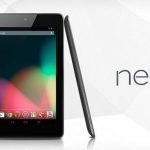
At Google's I/O 2012 developer convention on Wednesday, the long-rumored Asus tablet sporting the Google Nexus brand was finally revealed. Confirming the rumor from Gizmodo Australia earlier this week, the tablet is known as Nexus 7.
As the rumors had suggested, the $199 device is going to be the first to run Android 4.1 (aka Jellybean), sport a 7-inch, 1280 x 800 display, run on a quad-core 1.3GHz Nvidia Tegra 3 processor with 1GB of RAM and a "12 core" GeForce GPU, be Wi-Fi only, and offer a 1.3 megapixel forward-facing camera, accelerometer, and NFC chip for device-to-device communication. The total weight of the device is just 340 grams.
Why is Motorola first and last to market?
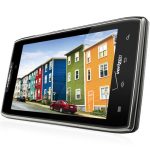
In light of the recent news that Google finished the acquisition of Motorola Mobility, one has to wonder which direction Motorola is heading.
Google claims it has not acquired Motorola just for the patents (though that is a great bonus if I’m being honest), but rather that Motorola's technical know-how and experience will be a great card up Google’s sleeve.
NOW would you buy a Google Nexus tablet?
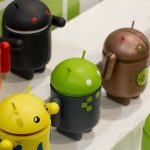
Google I/O starts tomorrow, and if rumors are right -- and I believe them -- developers get a big peak at the 7-inch Nexus tablet. About a month ago, I asked how much would you pay for one. Now with more details available, I ask if you will buy the Google device.
The Nexus tablet, manufactured by Asus, features a 7-inch IPS LCD display with 1280 x 800 resolution; 1.3 GHz quad-core Tegra 3 processor, 1GB RAM; 1.2-megapixel front-facing camera; near field communications; and Android 4.1 "Jellybean". There are two capacities, 8GB and 16GB, selling for $199 and $249, respectively. This information comes from a leaked training manual that Gizmodo Australia obtained. The big differentiator is price. As I explained in April, "Google isn't trying to save Android tablets but kill Kindle Fire".
Firefox for Android gets a new UI, Flash support
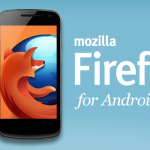
Mozilla on Tuesday announced the latest update (v.14.0) to Firefox for Android is now available in Google Play for devices running Android 2.2 and up. The famous browser, now in its second year on Android, has received a significant feature upgrade this time around, and includes an all new UI and start screen, a sped up experience, and support for Adobe Flash.
Even though Mozilla's mobile Firefox has been in development for more than four years, it is still something of a baby in the Android world. Firefox 4 for Android turned out to be kind of a resource hog, kind of slow, and not entirely stable. The beta of Firefox 5 improved on some of the shortcomings of its predecessor, but clearly needed some work.
Nexus 7 tablet rumors all point at Amazon's growing Android dominance
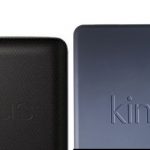
The existence of a 7-inch Google-branded Android tablet has been rumored for a couple of months, and Asus has proudly taken credit for manufacturing the device. Still, the specifics have not be officially laid out, so we have to rely on unnamed sources and ambiguous evidence for the next few days until Google I/O begins.
Reportedly, some "training materials" uncovered by Gizmodo Australia related to a tablet known as the "Nexus 7" provide some confirmation to prior rumors of an Asus-made Google Tablet, similar to the MeMO 370T that was debuted by Asus earlier this year.
Android users are smarter than you

Just ahead of Google I/O 2012, The Street claims that "Android users don't know enough to matter". Interesting story, especially considering the timing, and one that’s bound to stir lots of criticism just because it puts down all Android fans in the world.
There are plenty of references, but they sustain a flawed point of view.
Apple's patent case against Motorola is over

One thing I have to say about US District Judge Richard Posner, he doesn't mince words. He's direct and cutting. If only there were more jurists like him on the bench. Cut he did today, in an order slicing Apple and Motorola to bits -- but the fruit-logo company he turned to mush. In a 38-page opinion and order, the judge effectively ended Apple's patent lawsuit against Motorola. Apple can appeal, but it's finished presenting before Posner.
"It would be ridiculous to dismiss a suit for failure to prove damages and allow the plaintiff to refile the suit so that he could have a second chance to prove damages", he writes. "This case is therefore dismissed with prejudice; a separate order to that effect is being entered today". Ouch.
Ahead of Google I/O, Android is the tortoise winning the race
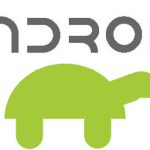
The annual Google developer convention I/O will take place next week. Like Apple's WWDC and Microsoft's TechEd, it is the big summer event where the world is given a look at each of the respective companies' plans for the coming year.
Google is expected to announce a lot of staggering new stuff, like its own branded sub-$200 tablet and its own Cloud platform to rival Amazon Web Services.
Flipboard finally brings its magazine-like news reader to Android
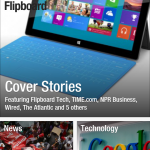
Flipboard, the social newsreader with a stylish magazine-like design, has emerged from beta and is now available free for all Android devices, including the Kindle Fire (although it’s optimized for smartphones rather than tablets). Editor's Note: It's not compatible with my ASUS Transformer Pad 300 -- curses.
The app lets you build a magazine made up of topics that interest you. Categories on offer include News, Technology, Flipboard Picks, Design, Photography, Politics, Sports, Style, Film, and Travel. Content is pulled from a range of quality sites like the BBC, Wired Magazine, and USA Today, and fully localized. American readers will see something different from British or Australian users.
Would you believe Android tablet adoption is even with iPad?
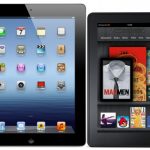
I surely don't. Perhaps even I am too influenced by all the pro-Apple propaganda. But the figures come from a reasonably reliable source, Online Publishers Association, which puts US iPad adoption at 52 percent and Android at 51 percent. Okay, I'll pause so you can wipe off coffee, or whatever else just spit out, from your computer screen.
The numbers don't add up to 100 percent, because some people own more than one type of tablet. Android gains largely come from Kindle Fire, which share is 32 percent -- four times new iPad and one point more than the original. Year over year, overall Android penetration rose from 32 percent, while iPad's fell from 72 percent. Perhaps it's no coincidence Android rose by 19 points and iPad fell by 20.
Samsung unveils new enterprise-safe Android brand, Galaxy S III first to sport it
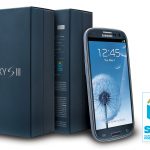
In the world of Android-powered smartphones, Samsung is the reigning king. It sells approximately 40 percent of all the Android smartphones going to consumers today, and Forrester Research predicts proprietary Android builds (such as Samsung's TouchWiz) will actually surpass Google's Android ecosystem within three years. Of course, this fragments the market and causes trouble for developers and enterprises looking to create and deploy software for Android.
Monday, Samsung unveiled a new brand that will be applied only to Android devices that have been approved for enterprise use: SAFE, or "Samsung Approved for Enterprise." It's similar to Motorola's line of Enterprise Android devices called Motorola Business Ready, which debuted earlier this year.
Today Apple and Microsoft write Android's epitaph

As I compose this post, Microsoft's TechEd keynote is underway, while Apple will kick off Worldwide Developer Conference in just a few hours. Both events will put forth very different views of the cloud-connected device future, which Gartner says will start as soon as 2014, when the cloud replaces the PC as everyone's personal digital hub.
For Apple, iOS 6 will be center stage, whetting consumers' appetites and giving them another weapon in their bring-your-own-device assault on workplace IT. Meanwhile, Microsoft pitches new wares for the enterprise -- Office, Windows 8, RT and Server, for starters. Where the two companies meet is the tablet, and there's no room between them for Android.
Google activates 900,000 Androids per day

Andy Rubin revealed the number late day, on the eve of Apple's developer conference. Google's Android chief disclosed the activations while dispelling rumors circulated by Robert Scoble about leaving for startup CloudCar. Rubin isn't going anywhere.
He last disclosed activations per day -- 850,000 -- on February 27. The new number means 27 million a month or 81 million every 90 days. That number is consistent with actual smartphone sales. Gartner, which tracks sales to end users rather than the analyst firm standard of shipments into the channel, reports 81.067 million Androids sold during first quarter -- again, that's smartphones and doesn't include tablets. By comparison, Apple sold 33.1 million iPhones, but the number doesn't include iPad or iPod touch.
Pocket TV is a mini Android computer in an HDMI dongle
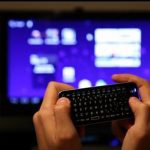
After meeting its Kickstarter goal of $100,000, three-year old startup Infinitec has made its Android-powered Pocket TV available for pre-order for just $99. The device utilizes the relatively new "HDMI Dongle" set top box form factor used by the Roku Smart Stick, and it brings Android Ice Cream Sandwich to the television screen.
The Pocket TV is powered by a 1GHz ARM Cortex A9 processor with 512MB of RAM, has 4 GB of internal storage and a microSD port supporting cards up to 32 GB in size. It's also equipped with a mini USB port for devices such as keyboards or webcams.
Recent Headlines
© 1998-2025 BetaNews, Inc. All Rights Reserved. Privacy Policy - Cookie Policy.